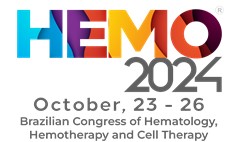
XVI Eurasian Hematology Oncology Congress
More infoThere are data in the literature on the possible etiologic role of Hepatitis C Virus (HCV) in the development of some hematological malignancies. However, these studies were heterogeneous, for example, the control groups varied from blood donors to patients with other hematological malignancies and healthy individuals. In addition, most studies included a relatively small number of patients, which did not allow for unambiguous conclusions. Based on the above, the aim of this study was to identify a possible association between hepatitis B, C and hematological malignancies.
Methodology797 patients of the National Center of Hematology and Transfusiology with various forms of malignant blood diseases and positive Hepatitis B (HbAgS) and C (anti-НСV) markers at the time of the diagnosis were analyzed. As a control group were used positive hepatitis B and C blood donors from the Central Blood Bank. The association between malignant blood diseases and infectious hepatitis was estimated using the Relative Risk (RR) and Odds Ratio (OR) with a 95% Confidence Interval. Differences were considered significant at p < 0.05. Statistical analysis was performed using SPSS software.
ResultsThe study revealed a positive association between a positive anti-HCV status and the risk of developing Non-Hodgkin Lymphoma (NHL) (RR/OR = 11.7/13.3, p = 0), Acute Lymphoblastic Leukemia (ALL) (RR/OR = 6.76/7.22, p = 0), Chronic Lymphoid Leukemia (CLL) (RR/OR = 5.9/6.24, p = 0), Multiple Myeloma (MM) (RR/OR = 3.94/4.08, p = 0.008752) and Acute Myeloid Leukemia (AML) (RR/OR = 4.7/4.91, p = 0.000001). In cases of Myeloproliferative Neoplasms (MPN), a statistically significant association could not be determined. Hepatitis B was statistically significantly associated with NHL (RR/OR = 5.27/5.56, p = 0.000465), CLL (RR/OR = 5.31/5.61, p = 0.000001), MM (RR/OR = 5.31/5.61, p = 0.000001) and MPN (RR/OR = 4.3/4.48, p = 0.000570).
ConclusionThus, it can be concluded that hepatitis C and B viruses may play a role in the development of some hematological malignancies, such as leukemia and lymphoma. HBV can contribute to the development of hematological malignancies by changing cell proliferation and causing chronic inflammation, which can disrupt the normal functioning of the immune system. Also, chronic inflammation activates cytokines and growth factors that can increase the risk of cell mutation, which in turn leads to the development of malignant tumors.






